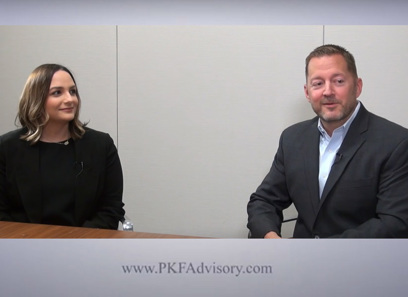M&A Outlook: Exploring the Growing Importance of Emerging Market Opportunities
M&A Outlook: Exploring the Growing Importance of Emerging Market Opportunities
Blog Article
Recognizing the Fundamentals of Mergers and Acquisitions for Service Growth
Mergers and procurements (M&A) stand for essential tactical decisions for businesses seeking to improve their affordable positioning and drive development. As companies navigate this complex landscape, the complexities of the M&A procedure and the key players included come to be pivotal to attaining preferred results.
Interpretation of Mergers and Acquisitions
Mergers and purchases (M&A) represent critical transactions where companies consolidate their operations to boost growth, market share, or competitive advantage. A merging typically includes 2 business coming with each other to develop a new entity, often with a common vision and mutual benefits. In comparison, an acquisition happens when one company acquisitions another, thinking control and integrating its operations right into the purchaser's framework.
These deals are driven by numerous inspirations, consisting of the desire to achieve economic situations of scale, expand item offerings, go into brand-new markets, or get innovative innovations. M&A task is an important element of corporate technique, allowing companies to adapt to altering market problems and react effectively to competitive pressures.
Furthermore, successful M&A deals call for thorough due persistance, mindful negotiation, and effective combination preparing to realize the expected harmonies. The complexity of these deals highlights the value of legal, financial, and operational considerations, as well as the need for alignment between the corporate societies of the combining entities - M&A. Eventually, M&A functions as a powerful tool for business looking for to position themselves for lasting development and boosted success in an ever-evolving company landscape
Kinds Of Mergers and Acquisitions
While the landscape of acquisitions and mergings includes a selection of methods, they can mainly be classified right into a number of unique kinds based upon their nature and objectives. The most typical types include horizontal, vertical, conglomerate, and market-extension mergers.
Horizontal mergings happen in between companies operating in the very same sector and at the exact same phase of manufacturing. This type aims to settle market share and decrease competition. Vertical mergers, on the various other hand, include companies at different stages of the supply chain, enabling enhanced effectiveness and control over manufacturing processes.
Empire mergings entail companies from unrelated industries, intended at branching out product or going into brand-new markets, thus decreasing danger exposure. Market-extension mergings take place in between firms in different geographical markets but within the exact same industry, allowing them to expand their customer base and enhance market reach.
Each type of merger or purchase offers distinctive strategic functions and can significantly influence the resulting company's functional dynamics, market placement, and growth trajectory. Understanding these classifications is necessary for companies taking into consideration M&A as a pathway for growth and competitive benefit.
Principal in M&A

Financial investment bankers play an essential role, acting as intermediaries that assist in negotiations and supply assessment insights. Their competence parties both aids browse complicated financial M&A Outlook for 2025 landscapes, making certain fair and reasonable terms. Lawful experts are likewise vital, as they make certain conformity with governing structures and handle risk by preparing and evaluating agreements.
Additionally, monetary experts examine the monetary health and wellness of both entities, recognizing harmonies and projecting post-merger performance. Company advancement teams within firms are in charge of identifying prospective targets and planning on purchase methods.
M&A Refine Summary
The procedure of acquisitions and mergers (M&A) generally includes numerous distinct stages that need careful planning and implementation. Originally, the procedure starts with strategic preparation, where firms identify their objectives and objectives for the M&A, such as market expansion or diversity. This is followed by target recognition, throughout which prospective acquisition targets or merging companions are investigated and evaluated for compatibility.
Once ideal prospects are determined, the due diligence stage begins. This vital step involves a comprehensive examination of the target firm's financials, operations, and lawful standing to determine any possible dangers. After due diligence, the arrangement stage takes location, where the regards to the offer, including cost and structure, are reviewed and set.
The assimilation stage occurs, where the business work to integrate their cultures, operations, and systems successfully. Effective assimilation is essential for realizing the anticipated synergies and benefits from the M&A.
Benefits and Challenges of M&A
Recognizing the capacity for growth and increased market share, firms commonly pursue mergers and acquisitions (M&A) to maximize calculated benefits. The main benefits of M&An include enhanced operational efficiency, expanded item offerings, and accessibility to brand-new markets. By integrating resources and know-how, companies can accomplish economic climates of scale, thus improving and reducing prices earnings. Furthermore, M&A can cultivate development through the integration of diverse abilities and innovations.
However, the difficulties linked with M&A are considerable. The monetary effects can be discouraging; the expenses of the acquisition procedure, including lawful fees and due persistance, can be considerable.
In addition, regulative scrutiny can make complex the M&A landscape, needing companies to navigate complicated legal requirements. In summary, while M&A can be a powerful tool for development, firms need to weigh the possible advantages against the inherent challenges to ensure effective assimilation and lasting worth creation.
Final Thought

Mergers and purchases (M&A) stand for tactical transactions where business consolidate their procedures to enhance growth, market share, or competitive benefit - M&A. Ultimately, M&An offers as a powerful device for companies seeking to place themselves for sustainable growth and enhanced success in an ever-evolving service landscape
At the forefront are the acquirers and target firms, whose critical goals drive the inspiration for M&A. The process starts with strategic planning, where firms identify their goals and purposes for the M&A, such as market expansion or diversity.Acknowledging the potential for development and enhanced market share, firms commonly seek mergings and acquisitions (M&A) to utilize on calculated advantages.
Report this page